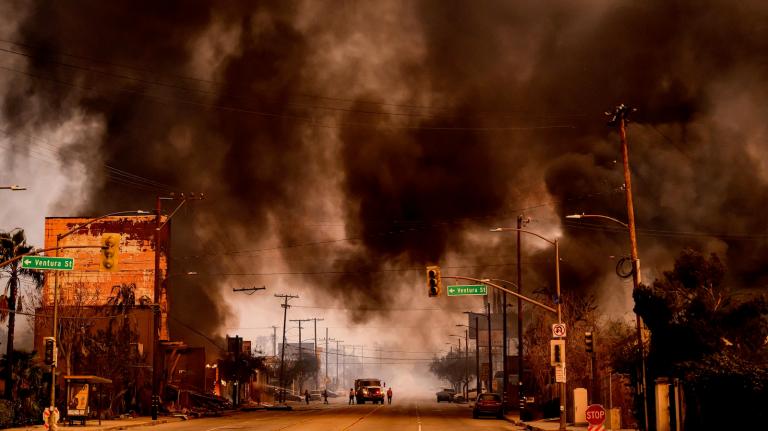Last week the Vermont Environmental Board denied a permit to a developer for a project in Hartland. It was a typical interstate-exit gas-and-food stop — the kind of place no one likes to look at but we’re all glad to find when we’re on a long trip and running low on fuel.
Hartland’s I-91 exit has no gas station, though gas and food are sold in town centers a mile or so away in either direction. The landscape at the exit is far from pristine — there’s a trucking and auto service place and a dump for excavation material — but there are also open fields, the traffic is mostly local, there are no glaring multicolored all-night lights. The reason given for nixing the project was to prevent strip development from starting there.
Whether or not that verdict was a good one, the process by which it was reached was a pain. It took months. It cost the town, the state, and especially the developer tens of thousands of dollars. If gas stations were not wanted in that place, it would have saved money, time, dashed hopes, hard feelings, and reams of paper to have said so long ago.
But that would have meant zoning, an idea that both Hartland and the state of Vermont have rejected. When Vermont’s land use law, Act 250, was written 30 years ago, it was intended to have two parts. The first part, the review process, is what just killed the Hartland gas stop. The second part was to be a map, required statewide but worked out town by town, that would designate appropriate areas for gas stations, homes, factories, so a project in the wrong place wouldn’t even come up for review.
That second part never made it into law. Rather than enrage landowners all at once by telling them what could be built where, Vermont chose to enrage them one at a time, project by project, endlessly and at great expense. Zoning violates an old, proud idea, usually stated: “A man’s got a right to do what he wants with his land.” That idea is entwined with security and freedom, patriotism and independence, creativity and privacy. Since I’m going through the Act 250 process myself, I can sympathize with that thwarted gas station developer, or with any landowner who sees his dreams limited by a map drawn by somebody else.
But another old, proud idea is: “Your freedom to swing your fist ends where my nose begins.” We don’t want our neighbors to build whatever they like, to divert water into or out of a stream, to shine lights or make noise or generate traffic to their heart’s content. These aren’t prissy, elitist issues; they concern public health and safety. Even to protect personal property, some collective control over land use is needed.
Our arguments about how to balance these two old, proud contradictory ideas devolve into testy claims that only landowners or only governments can be trusted to manage land. Of course some landowners can be trusted and some can’t; some governments can and some can’t. I can point to beautiful examples of land stewardship, public and private, that enhance the lives of everyone around them. We can all point to strip developments, strip mines, actions that strip the land of life, soil, beauty, and value, often the result of landowners and governments conspiring together.
I can see just two ways to protect our property from both our neighbors and our governments, and one of them is zoning.
Zoning in which we all actively participate, that is, so patterns of development can be sensible and surprise-free. Landowners will know what is allowed on every piece of land before embarking on a fruitless review process. Ideally they will know that there is a public interest in prime agricultural soils growing food, not subdivisions. Business and traffic growing where business and traffic already exist — which is also better for business. New houses near existing houses, because that’s cost-effective for public services like roads, snowplowing, garbage collection, school busing, fire protection.
I’m no lover of zoning; it’s often done stupidly, arbitrarily, or too leniently. But it’s necessary and could be better if we exercise our always necessary democratic vigilance over it. Zoning will always generate cries of outrage.
Better all at once than one by one from now till eternity.
The second thing we can do is to make zoning less arduous and less necessary by being wiser land managers in the first place, making our private dreams and plans more congruent with the capacity of the land and the long-term good of the community. The land goes on long after our tenure expires. We don’t “own” it, we are its temporary trustees. Our trusteeship brings pleasures and privileges, but also responsibilities.
My favorite image of a wise land management culture comes from a utopian book called Islandia, written early last century by a wistful lawyer named Austin Tappen Wright. Wright depicts a discussion between a brother and a sister about whether some trees should be cut on the family land.
They argued a little and I found that what interested them was the effect upon a certain view. It came to me quite suddenly that they looked upon their whole farm as a great living canvas, … to which they as artists made only little changes from time to time; for the larger picture was painted mostly by nature and by generations of Stellins before them.
If we want to get rid of zoning, Act 250, and gas stations we don’t like looking at, while still having gas stations we like to stop at, all we have to do is think and act like that.

